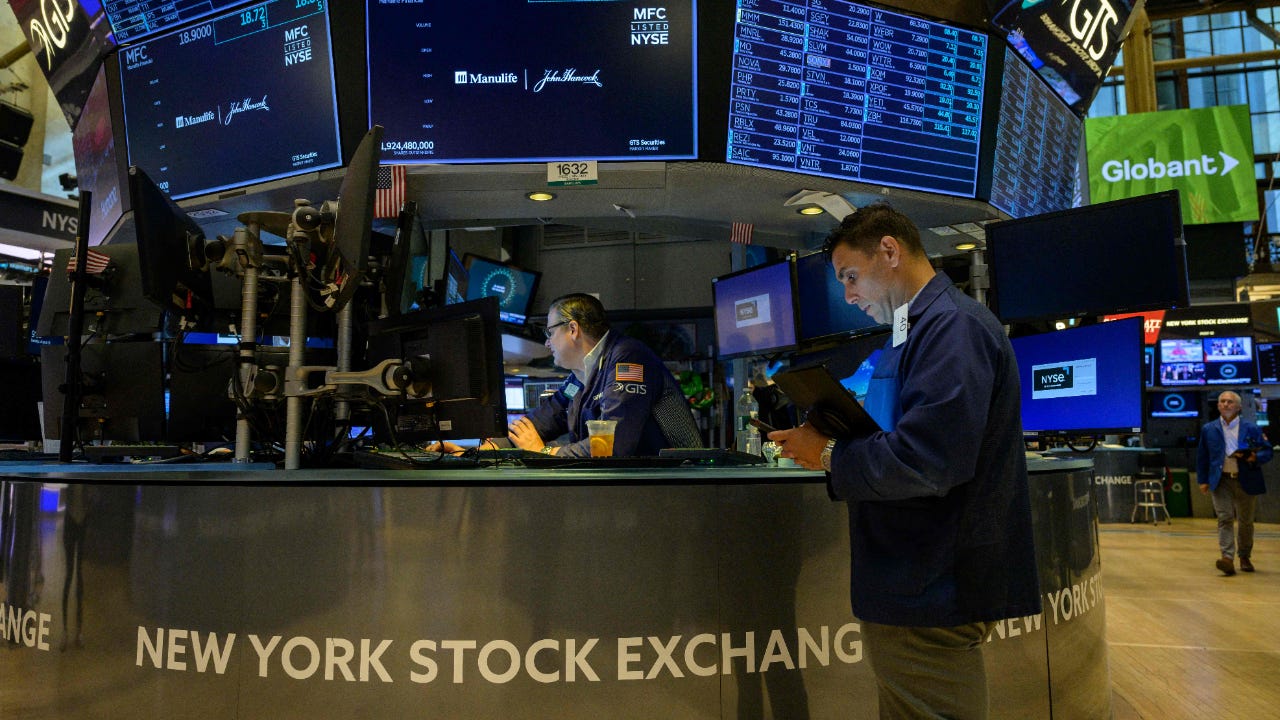Investing vs. speculating: What’s the difference?

The Bankrate promise
At Bankrate we strive to help you make smarter financial decisions. While we adhere to strict , this post may contain references to products from our partners. Here's an explanation for .
“Past performance does not guarantee future results.” You may have heard investment firms state this. In fact, the Securities and Exchange Commission (SEC) requires them to say so. If we can’t assume future results, wouldn’t that mean investing is the same as speculating? It might seem that way, but investing and speculating are, in fact, different.
To understand the distinction, let’s break down the difference between investors and speculators. It’s important to know the difference so you don’t put all your money in speculative assets while thinking you are investing.
What is investing?
Investing is the process of exchanging money for assets that you can reasonably expect to increase in value over time, creating a capital gain. Investors focus on the performance of the underlying business rather than just the investment’s price. Investors tend to focus on long-term, incremental gains rather than big gains in just a few weeks or months.
In the U.S., investors buy stock in publicly traded companies listed on exchanges such as the New York Stock Exchange or Nasdaq. These firms are required to publish quarterly earnings reports, allowing investors to evaluate the company’s financial health and make informed investing decisions.
Investing is not risk-free, but it tends to be a more conservative approach rooted in the tangible success of a company. It’s not just about where the price of the asset will be in a few months.
What is speculating?
Speculating is buying assets with the hope of substantial gains, often in a very short time period. Speculators may enter and exit assets several times quickly. Speculative assets often have a significant risk of total loss in value, which speculators accept in return for a chance of high returns. Speculative assets often include unproven businesses, penny stocks and cryptocurrency.
Speculators tend to be hyper-focused on the price of an asset and less so on the underlying company’s competitive position, future success or productivity. They may rely more on price movements and technical charts rather than on an analysis of the strengths of a business.
Speculators often watch prices of their preferred asset by the day or even by the hour. These assets can be highly volatile, so this close attention can be stressful for speculators.
Examples of investments
Many types of investments are best for long-term appreciation and don’t require short-term speculation, though speculators may jump into these markets and create bubble markets.
- High-quality stocks: Stocks allow you to buy a piece of ownership in a publicly traded company. In the context of investments, this category generally refers to the blue chip stocks of established companies. It can also include investments such as stock ETFs and mutual funds.
- Bonds: A bond is a form of debt that allows organizations to fund their operations. In return, the bonds pay a modest rate of interest. Investors typically favor government bonds, corporate bonds, plus bond ETFs and mutual funds.
- Real estate: Real estate is one of the oldest forms of investment and remains popular today. While real estate is not without risk, it tends to be a strong investment.
- Certificates of deposit (CDs): CDs bear some resemblance to bonds but are primarily issued by banks and credit unions. CDs pay a modest rate of interest and are typically FDIC-insured, meaning they’re as risk-free as an investment gets.
- Annuities: Annuities can be thought of as a form of retirement insurance. You pay either a flat amount upfront or over time, and in return receive a lump sum or regular payments in the future.
Examples of speculative investments
These investments, while often popular, are also speculative in nature. Generally, you should be prepared to lose your entire investment if you put money into them.
- Cryptocurrencies: Cryptocurrency has its advantages, such as ease of currency exchange and transaction speed. While some cryptocurrency investors have made millions, many more have lost large sums of money.
- Commodities: Commodities are goods that are non-branded such as oil, gold, silver and agricultural goods such as corn and soybeans, among many others.
- Options: Options are contracts that allow you to buy or sell a stock by a specific time for a specific price. Traders can buy options contracts in order to speculate on price movements of different types of assets.
- Artwork: Artwork is a popular investment in some circles because it has the potential to rapidly increase in price. However, artists and artistic styles can rise and fall in popularity, causing a once-valuable piece of artwork to draw little interest from buyers.
- Collectibles: Collectibles can be almost anything that people like to collect, such as trading cards, toys, and comic books. Similar to artwork, interest in these can wax and wane rather quickly.
Speculative assets are the kinds of things that legendary investor Warren Buffett steers clear of.
Comparing an investment vs. speculative mindset
The line between investing and speculating can be fine. In fact, many speculators jump into investments and run up their prices. So it’s not only a question of the type of asset but also your mindset. Your mindset will determine whether you end up investing in something or speculating on it.
Take stocks, for example. Investors tend to buy stocks in a company with the intention of growing their money. Long-term investors don’t often sell their investment, but instead hold it for years or even decades. Many good investors think about the performance of the underlying business over a period of years, not just what the stock will do over the coming month.
Speculators, on the other hand, sometimes buy and sell investments frequently. They might be influenced by the hottest trend, and their emotions can play a big role, too. Speculators may believe they can beat the market even though the average person fails to do so on a consistent basis.
Bottom line
Investors take a systematic approach to growing their wealth, buying assets with reasonable levels of risk in exchange for long-term growth. Speculators, on the other hand, buy assets that may experience rapid growth but can also lose their entire value if they go out of favor.
Popular assets such as stocks and bonds can be investments or speculative assets, depending on how you approach them. It’s important to know the difference, so you can properly manage the level of risk you take against your expected return.
Editorial Disclaimer: All investors are advised to conduct their own independent research into investment strategies before making an investment decision. In addition, investors are advised that past investment product performance is no guarantee of future price appreciation.
Related Articles



Value investing vs. growth investing: Which is better in today’s market?
